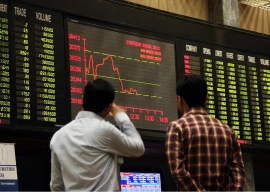
Before allowing write-offs, all liquid assets had to be realised with sale proceeds used to reduce outstanding balance.
Any proposal for a write-off greater than Rs2.5 million required a review by external auditors.
Hence, it is apparent that the State Bank provided a well thought-out framework under which non-performing loans (NPLs) could be written off. It laid the express responsibility of writing off the loans on the shoulders of the board of the respective bank with expected additional oversight from external auditors.
Another myth being perpetuated is that a colossal amount of Rs256 billion was waived between 1971 and 2009. Firstly, no loans were waived. They were written off, which means any existing collateral was realised. Secondly, the numbers need to be put into context. Over a 31 year period, the amount of Rs256 billion works out to Rs8.25 billion per year. This, as a percentage of total loans outstanding, is well within banking norms locally and regionally. However, if there were parties such as politicians, business tycoons and military concerns for whom the guidelines were abused, then it is these parties who should be the subjects of any suo motu action. In addition to them, the management, board and external auditors of these financial institutions should be appearing in a court of law rather than the apex regulator.
The third myth is that these write-off activities amount to the plundering of small depositors and public money. The reality is that a deposit, regardless of the size, does not automatically equate to ownership. The depositor would also need to be a shareholder in order to qualify as an owner. Since no financial institution was declared bankrupt as a result of these write-offs, and no depositor lost his money, this myth rapidly unravels.
Even the argument that a reduction in income led to lower rates of interest being realised by depositors is flawed, as the interest rate is a function of a bank’s liquidity and prevailing money market rates. If the argument being made is that small shareholders had to bear the impact of this policy, then again it is erroneous because there was no impact on share prices. Moreover, most commercials banks are owned by major institutions, funds or high net worth individuals, so loan write-offs can hardly be tied to the exploitation of small depositors or the plundering of public money.
The reality is that while the State Bank scheme was well thought-out and its objectives were appropriate, some banks — during the time they were nationalised and later when they were privatised — followed neither the letter nor the spirit of the scheme. The focus of accountability should be on the management, board and external auditors because it is by these actors that the scheme was abused. In these cases, the financial institution, as well as customers who benefited from concessions, should be brought to court. This action will lead to better governance at the board as well as at the external auditor level and should result in loans being recovered and better management of write-offs in the future.
Holding the State Bank responsible for the write-offs, sensationalising the amounts over 21 years and misrepresenting the consequences for small depositors may make for a good story but does nothing to promote better governance or loan recoveries.
Published in The Express Tribune, November 29th, 2010.


















COMMENTS
Comments are moderated and generally will be posted if they are on-topic and not abusive.
For more information, please see our Comments FAQ